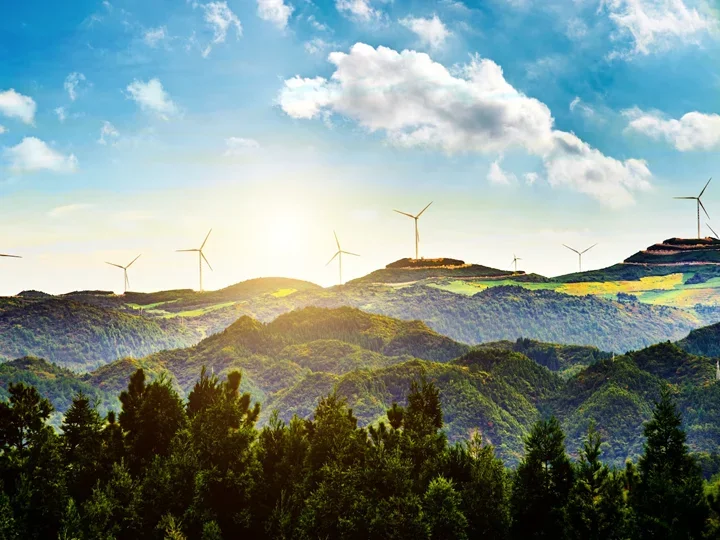Innovations and Developments in Energy Plants: Energy production has been the backbone of human civilization, a constant companion throughout our journey from primitive fire pits to modern nuclear reactors. But as we march into an era increasingly aware of its environmental footprint, the pressure is mounting on this sector to evolve, to innovate, and to tread lightly on our shared home.
Innovations and Developments in Energy Plants: This article will delve into the innovative developments and pioneering advancements that are reshaping energy plants across the globe, weaving a future where energy is clean, sustainable, and efficient. As we unfold the narrative of energy evolution, we’ll explore the driving forces, the landmark breakthroughs, and the implications of these innovations for our world. So, let’s step into the intriguing world of energy production, where science, technology, and environmental stewardship converge to power our lives and protect our planet.
Innovations and Developments in Energy Plants Retgen
The world of energy production is as old as human civilization, yet it remains one of the most dynamic and innovative sectors. Technology, science, and a drive to create a sustainable future are continuously pushing the boundaries of what’s possible.
Imagine a symphony orchestra, where each instrument plays its part to create a harmonious whole. That’s what Retgen, a typical real-time solar power monitoring system, is like. It brings together a variety of components, each playing a critical role in ensuring the system operates at peak performance.
At the heart of this orchestration are sensors and data collection devices. They measure vital metrics like sunlight exposure, temperature, and power output, becoming the eyes and ears of the system.
This data doesn’t just stay put. It takes a journey via communication protocols to a centralized, cloud-based system. Here, it is processed, analyzed, and made sense of. The result? A real-time overview and in-depth analysis of the performance of your renewable energy plants, accessible from anywhere.
Retgen’s user-friendly interface adds the final touch. It provides users with the tools to track network activity in real-time and delve into past performance, turning complex data into actionable insights.
Power Plant Asset Management Software
A Brief History of Energy Generation
From the discovery of fire to harnessing the power of wind, water, and eventually steam during the industrial revolution, the human race has always relied on energy. We’ve come a long way since those primitive days, haven’t we?
The Drive for Innovation in Energy Production
As the world becomes more conscious of its environmental footprint, a race is on to find cleaner, more efficient ways to produce power. Who would’ve thought that a simple gust of wind or a beam of sunlight could be our ticket to a cleaner future?
Major Innovations in Energy Production
We’ve seen a wealth of innovation in the energy sector over the past few decades, with many groundbreaking technologies becoming mainstays in our energy production infrastructure.
- Advancements in Solar Power: Solar power has seen huge leaps in technology and efficiency. With perovskite cells and floating solar farms, we’re capturing more of the sun’s energy than ever before.
- Innovation in Wind Energy: Wind energy is no longer just about huge turbines on hills. Offshore wind farms, vertical-axis wind turbines, and even airborne wind energy systems are now realities.
- Breakthroughs in Nuclear Energy: The development of small modular reactors and the ongoing research into fusion power are revolutionizing the nuclear sector. It’s not just about splitting atoms anymore!
- Progress in Hydro Power: New designs for turbines, fish-friendly hydroelectric systems, and even underwater kites are redefining the potential of hydro power.
- Advancements in Bioenergy: From waste to energy, bioenergy has come a long way. Innovations such as advanced biofuels, biogas, and algae-based energy sources are making this sector more sustainable and efficient.
Impact of Technological Developments on Energy Plants
These innovations have far-reaching implications for energy plants worldwide.
- Efficiency Improvements: Technological advancements have led to more efficient energy production, reducing waste and maximizing output.
- Environmental Impacts: Green technologies have helped minimize the environmental impact of energy production, a vital step towards a sustainable future.
- Cost Reduction: Innovations often lead to cost savings, making energy production more economically viable.
The Future of Energy Production
The future looks bright for energy production, with many exciting advancements on the horizon.
- Sustainable Energy Production: The focus is on sustainable, clean energy sources, reducing reliance on fossil fuels.
- Energy Storage Innovations: Improvements in energy storage, like advanced batteries and pumped hydro storage, will play a vital role in our renewable future.
- Advanced Nuclear Technologies: Nuclear fusion and advanced reactor designs could provide abundant, safe, and clean energy.

Innovations and Developments in Energy Plants Conclusion
The energy sector is a hotbed of innovation, with advancements in technology leading to more efficient, sustainable, and cost-effective energy production. As we continue to push the boundaries of science and technology, the energy plants of the future will be more innovative, efficient, and sustainable than we could ever imagine.
Innovations and Developments in Energy Plants FAQs
Innovation in energy production is primarily driven by the need for cleaner, more efficient, and more sustainable methods of generating power.
Major advancements in solar power include the development of perovskite solar cells, floating solar farms, and solar thermal technology.
The future of wind energy includes developments like offshore wind farms, vertical-axis wind turbines, and airborne wind energy systems.
Nuclear energy is evolving through the development of small modular reactors, advanced reactor designs, and research into nuclear fusion.
Technological advancements often lead to increased efficiency and decreased waste, which can reduce the cost of energy production.



